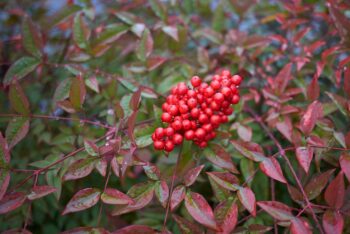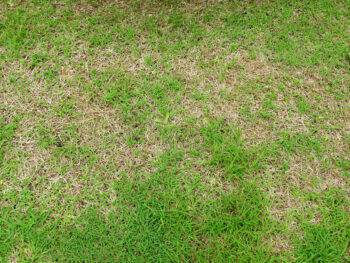Any avid gardener knows that winter doesn’t mean the planting has to halt until springtime. But not all of us know exactly what to strive for. While all vegetables need some amount of sun exposure in order to thrive, there are actually several to plant in the wintertime, in the areas that have partial shade.
Many vegetables, including those of the cruciferous, root-based, and leafy varieties, will fare well over the winter, with the proper accommodations.
Cruciferous Vegetables
Brussels Sprouts
Did you know that brussels sprouts, broccoli, cabbage, cauliflower, and kohlrabi are all different varieties of the same plant? That’s right. Suffice it to say, they therefore have very similar requirements.
All cruciferous vegetables, like the ones above, pack a powerful punch when it comes to hardiness and nutrition. The main thing brussel sprouts need in order to thrive is a lot of room. During an active growth period, they need to be about 2 or 3 feet apart.
Broccoli
When it comes to farm-to-table crops that are easy to cultivate, broccoli is a winner. They love the shade, and they’re full of vitamins and enzymes that your body needs.
Just like brussels sprouts, broccoli does best starting indoors. Move to your garden after a month to 6 weeks. Transplants harvest at 50-90 days. Whereas plants from seeds take 80-100 days to mature.
Cauliflower
Broccoli’s pale cousin, cauliflower is enjoying a wave of popularity in the culinary industry. Turns out it isn’t just for steaming; this versatile veggies easily mimics rice, pizza dough, and even mashed potatoes.
Again, its requirements are nearly identical to those of its cruciferous relatives. Don’t transplant seedlings until they’ve have about 5 leaves each. The heads are ready for harvest once they reach a diameter of around 6 to 8 inches.
Root Vegetables
Carrots
Many root vegetables fare well with minimal sun exposure, including carrots. While they can be planted anytime between July and February, they actually prefer cooler temperatures. So this may be one you want to be sure and cultivate outside of the hot Texas summers.
Carrots need to be thinned out as they grow, to make sure they have adequate room in the soil. Once the stalks reach a height of about 4 inches, thin them to 2 inches and then 4 inches apart. They typically take 2.5 to 3 months to mature for harvest.
Beets
These earthy, vitamin-rich roots are actually more versatile in the kitchen than some realize. They can be boiled, pickled, and even roasted with onions and garlic.
Beets are a little more sensitive to the cold than some other root vegetables, so be ready to cover them during a particularly harsh or lengthy freeze. They do best when planted about 3 weeks prior to the last winter frost, and will be ready to harvest in 1.5 to 2 months.
Rhubarb
This shade lover may be a bit less popular than many of its root-based cousins, but it makes for a mean pie. If you crave the sweet-tartness of strawberries, but with a punch of crispy, earthy zest, rhubarb is the way to go.
These perennials are hardy growers, returning a larger and more robust crop year after yar. Be sure to give them some growing space in the soil, just like with carrots.
Chives
Everyone’s favorite potato garnish, chives are thoroughly winter hardy and even produce edible flowers! They bloom perennially, producing tall stalks with a whitish-lavender blossom you can toss in with your salad greens.
Chives aren’t afraid of snow, and they can be planted to grow right through the entire winter season. Chop off the stalks for meal prep once the flowers bloom, leaving about 6 inches of length intact.
Leafy Vegetables
Spinach
Perhaps a close second to broccoli when it comes to “super foods,” this beautiful shade lover is definitely a favorite for both gardeners and foodies. It only needs a bit of direct sunlight in order to thrive, and can be reseeded throughout the season for a continuous crop.
Spinach can be cultivated either indoors for transplanting, or directly into your garden. Some cover may be necessary for extreme freezes, but the main chore with spinach is to harvest it regularly so it remains thin enough to continue producing new leaves.
Arugula
We like to think of arugula as spinach’s feisty cousin. This flavor-packed foliage is rich with both vitamins and flavor, offering a mildly bitter and peppery touch to your salad.
A rapid grower, arugula needs to be harvested a mere 4 weeks after planting, with repeated seeding and sowing to ensure a steady harvest. While it can endure a mild frost, be prepared to cover it during extreme temperatures.
Kale
In culinary culture, kale may be regarded as last year’s head cheerleader, but that doesn’t detract from the bold flavor and massive health benefits this resilient roughage has to offer. For those who prefer leafy greens that take less than 10 minutes to chew, keep in mind that it can be boiled or steamed while still retaining a pleasant crunch.
Kale needs a few inches of space for growing, but doesn’t need to be thinned out unless you notice obvious crowding. It takes 2 to 3 months to mature from a seedling, or 1 to 1.5 months from transplanting to the garden.
Lettuce
There are several varieties of winter hardy lettuce. All types of Bibb (butter) lettuce fare well in the cold seasons, as well as some lesser known types such as “Tango” and “Vulcan” lettuce. Did you know that Romaine lettuce is also known as “Winter Wonderland,” making it a great addition to your cold weather cultivating?
Most lettuces sprout in a mere 1 to 1.5 weeks, and may need some covering during a hard or lengthy freeze. Be prepared to harvest them as soon as the heads reach 8 to 10 inches in diameter, as waiting any long risks an over-ripe crop.
Watercress
Watercress is a wonderful addition to any shady garden. It needs almost no direct sunlight in order to remain healthy and verdant. This rapid grower offers a zesty bite that’s similar to cilantro leaves.
The foliage of this vegetable should be gathered quickly, about 3 weeks after the stalks emerge from the soil. It can be harvested repeatedly throughout its active growing season, so long as it receives adequate water.
Garden Cress
AKA, winter cress, this plant produces attractive yellow blossoms. It does well in cooler climates. Just like classic watercress, it is both an herb and a leafy green, due to its culinary diversity.
Pungent and peppery, it makes a great addition to a variety of dishes. Thin it out as it emerges from the soil, giving each plant 2 to 3 inches of space.
Mustard Greens
Most of us think of mustard as that stark yellow bottle in the fridge door. This large leafy green will enhance your culinary arsenal. Boil this crunchy veggie with onions, dry it for seasoning, or simply wrap it around your bratwurst for a lively, sour burst of flavor.
Mustard greens require a bit of room for cultivation, as their leaves grow in broad and dense. They’re thirsty vegetables, so they need a lot of water. They will provide a continuous harvest with regular culling.





